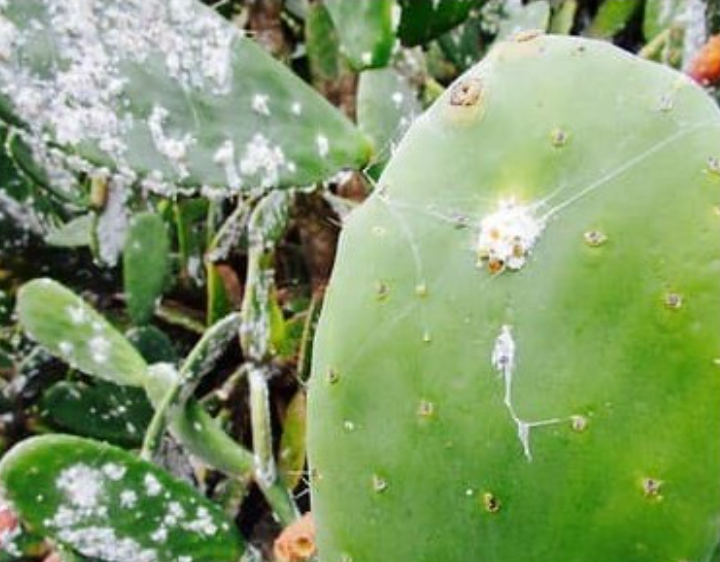Does Neem Oil Kill Fungus Gnats? How to Use
Fungus gnats are small insects that infest soil and other potting media. While adults don’t harm plants, their larvae can damage roots, stunt plant growth, or kill the plant. Fortunately, you can use neem oil to control the fungus gnats. But how do you use it?
Neem oil contains azadirachtin as an active ingredient that has insecticidal properties. This organic pesticide can easily penetrate the soil and come into contact with the larvae killing them or preventing them from developing into adult gnats.
Since most of the fungus gnat’s life is spent as a larva and pupa in organic matter or soil, detecting them for effective control can be difficult. Take action when spotting tiny white bugs in houseplant soil or seeing adult gnats on your plants.
The affected plant may also show symptoms like sudden wilting, loss of vigor, stunted growth, and yellowing. Additionally, you may see adult gnats flying around the plant or near the lights in your home.
If you decide to use neem oil or insecticidal soap, know the type of pest you are targeting to control. While they are all reputable organic pesticides, the latter isn’t effective against fungus gnats larvae.

Neem oil for fungus gnats – How to use
Neem oil is naturally occurring in the seeds of the neem tree, scientifically known as Azadirachta indica. The oil contains several compounds, including azadirachtin, the most active ingredient for repelling and killing pests.
Neem oil works to smother pest insects, reduce their feeding ability, and disrupt their hormonal activities and life cycle at all stages. The oil also effectively treats fungal and bacterial diseases in plants, including powdery mildew, mols scab, black spot, rust, sooty, anthracnose, and leaf spot.
When used correctly, neem oil kills many plant pests, such as spider mites, mealybugs, whiteflies, fungus gnats, thrips, scale insects, and more. The oil comes in various formulations, including ready-to-use sprays, wettable powders, or emulsifiable concentrates.
Here are the steps to use neem oil for fungus gnats:
- Mix 1-2 tablespoons of neem oil per gallon of water and add a few drops of liquid dish soap or insecticidal soap to help the oil mix with the water.
- Before applying the neem oil solution, water the plants to make the soil slightly wet and not waterlogged.
- Use a watering can or spray bottle to apply the neem oil solution directly to the soil surface. Ensure the whole soil surface is drenched with the neem solution.
- If you intend to kill mature fungus gnats on the plant or other pests, test the spray on a small section of the plant, and if no damage is observed in the next 24 hours, spray the whole plant. Make sure that the top and undersides of the leaves are well coated.
- Repeat the neem oil treatment every 7-14 days or as directed on the product label until the fungus gnats are under control.
Note: Neem oil can damage plants when used in high concentrations or on sensitive plants, so it’s important to test the solution on a small area before treating the entire plant.

How to prevent fungus gnats
In addition to using neem oil, it’s also important to practice good cultural practices such as allowing the soil to dry out slightly between waterings, removing any decaying plant material, and avoiding over-fertilization, as these can all contribute to fungus gnat infestations.
Visual inspection of plants can also help determine whether the problem of gnats exists. Move the infested plants away from the rest to avoid the spread of the pests. Further, use only pasteurized potting mix when growing or repotting your plants.
Important tips for the application of neem oil
To get an effective outcome, consider the following tips when applying neem oil to your plants:
- Some plants are sensitive to neem oil, so test on a small area and wait 24 hours for signs of damage.
- Avoid using neem oil in harsh sunlight to prevent foliage burn. Treat the plants early in the morning or late in the day.
- Ensure the plant foliage is thoroughly coated to treat pests or diseases effectively.
- Don’t use this natural pesticide in extremely cold or hot temperatures.
- Avoid using neem oil on stressed plants due to over or underwatering, overwatering, or after transplanting.
- Avoid spraying neem oil on new plant seedlings, as they can be sensitive to the treatment.
Final Thought
Neem oil is a natural insecticide and fungicide effective in controlling fungus gnats and other pests. To use neem oil, dilute it with water according to the instructions on the product label and apply it to the soil to kill fungus gnats or directly on the foliage of plants to control other insect pests.
It’s important to note that neem oil is not an instant solution to pest problems, and it may take several applications to see results. Additionally, it can be harmful to plants and beneficial insects and pollinators if used improperly.
My name is Diane M Lewik, and I am the founder of this website. I am a degree holder in plant biology from the University of California – Berkeley. Over the years, I have cultivated a vast collection of succulents and I have learned a great deal about how to grow and care for these unique plants. Feel free to ask any questions in the comment section below.





